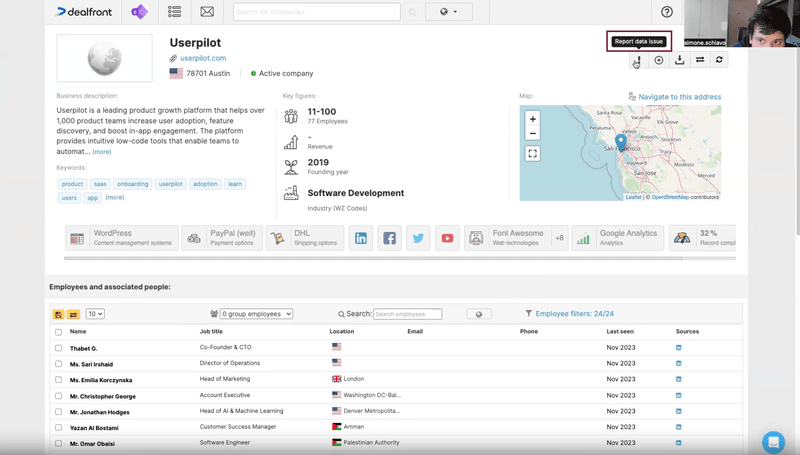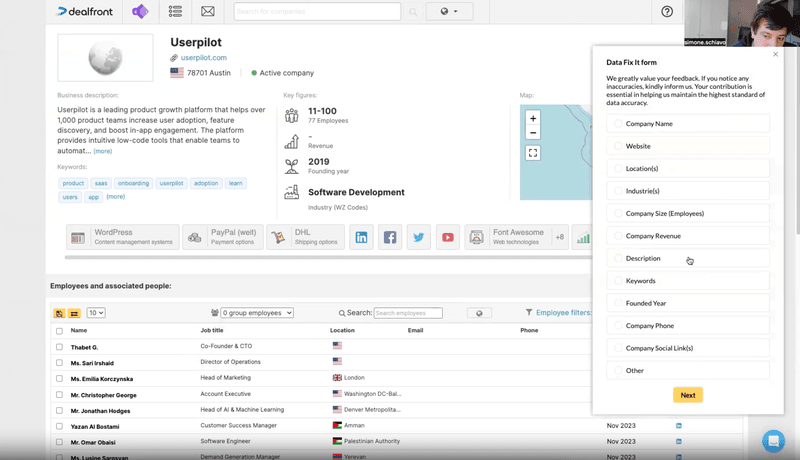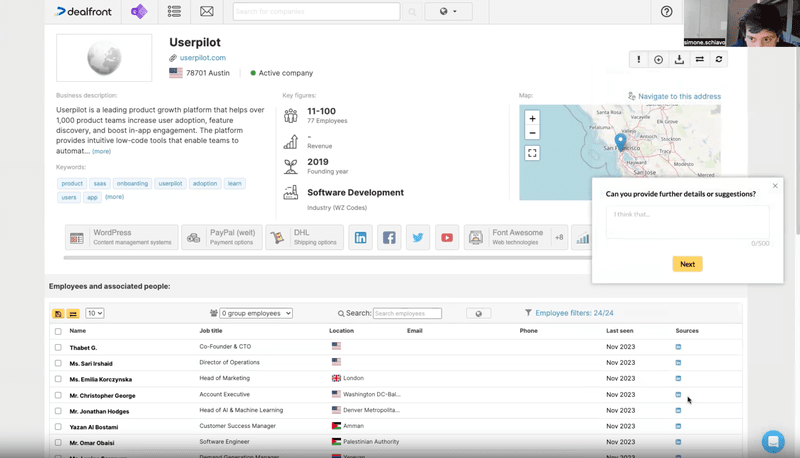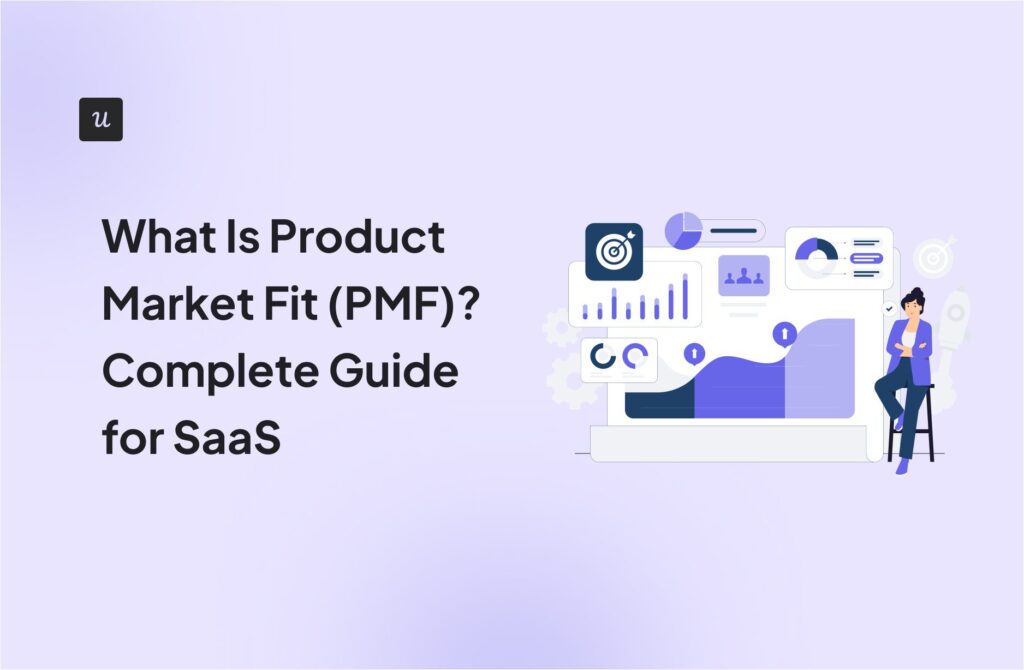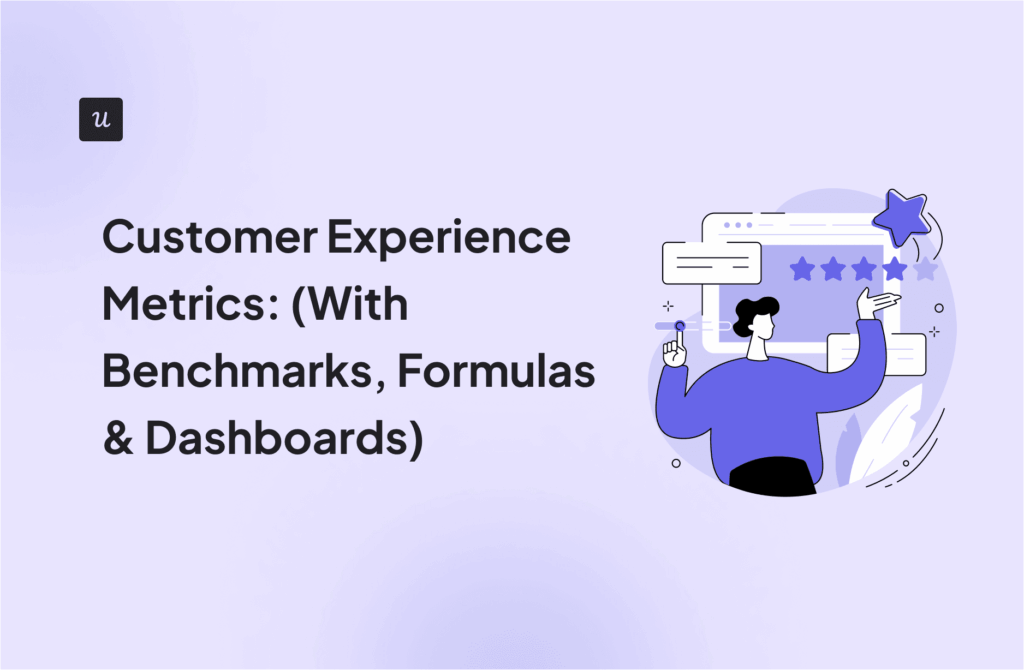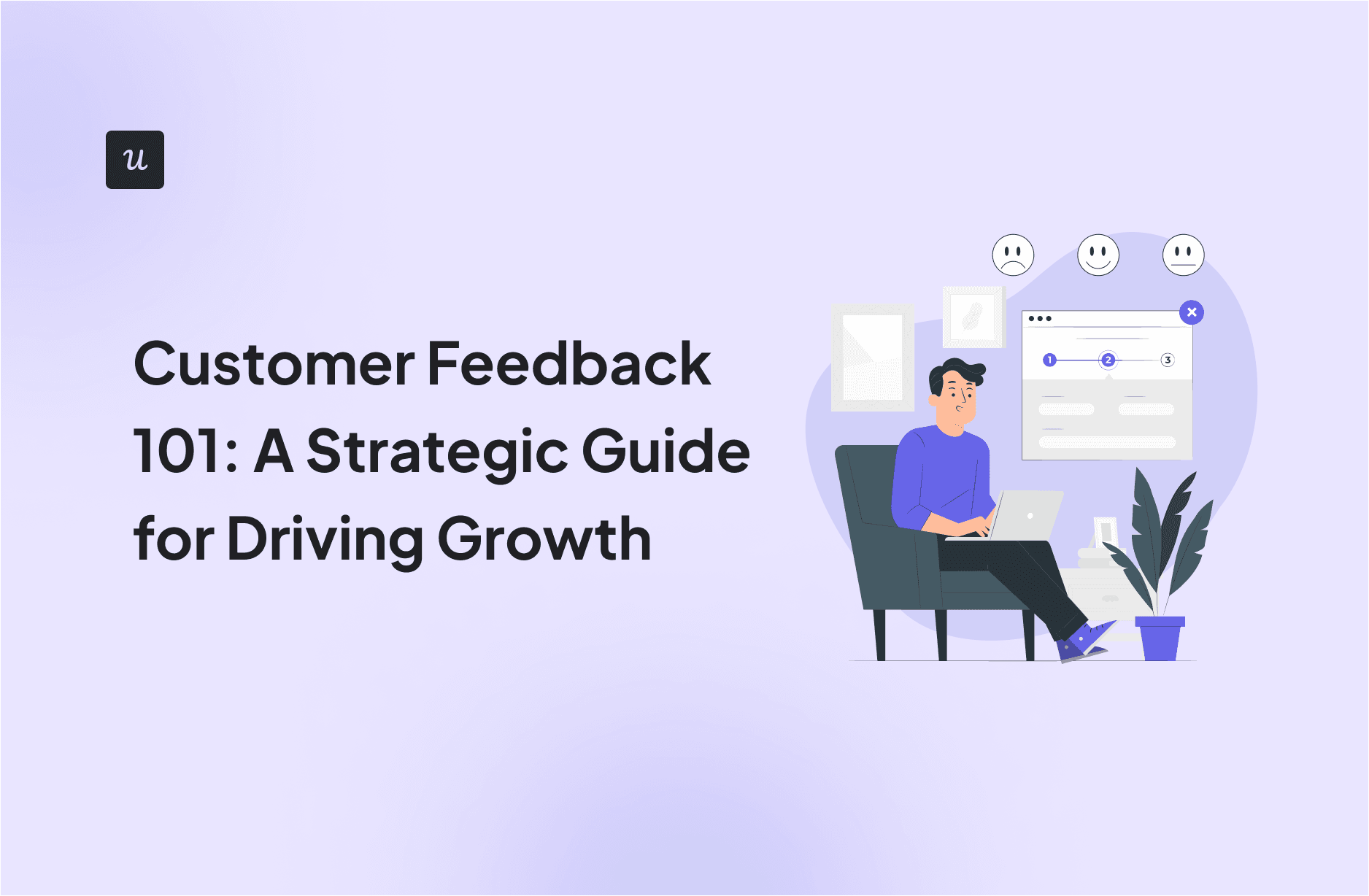
Every piece of feedback is an opportunity to refine your product quality and take customer experiences up a notch.
However, customer feedback by itself doesn’t create value. How you act on the insight makes all the difference.
In this guide, we’ll walk you through the practical strategies to collect, analyze, and use customer feedback to turn insights into actionable decisions that increase customer loyalty and drive growth.
Try Userpilot Now
See Why 1,000+ Teams Choose Userpilot

What is customer feedback?
Customer feedback is the insights, opinions, and experiences customers share about your product, service, or overall brand.
It’s the bridge between your product and your customers’ expectations. The actionable feedback data from many customers helps you discover what delights them, frustrates them, and what needs refining to improve their experience.
Whether it comes through glowing praise, thoughtful feature suggestions, or even silent disengagement, feedback highlights your strengths and pinpoints your weaknesses.
Is customer feedback important?
Think of customer feedback as your golden ticket to better product creation and strengthened customer experience.
When done the right way, implementing customer feedback builds trust, loyalty, and lasting relationships that set your brand apart from the rest.
Meagan Glenn, Senior Program Manager at Lavender, emphasizes that feedback serves as the foundation for successful product development and customer satisfaction. Here’s what she had to say:
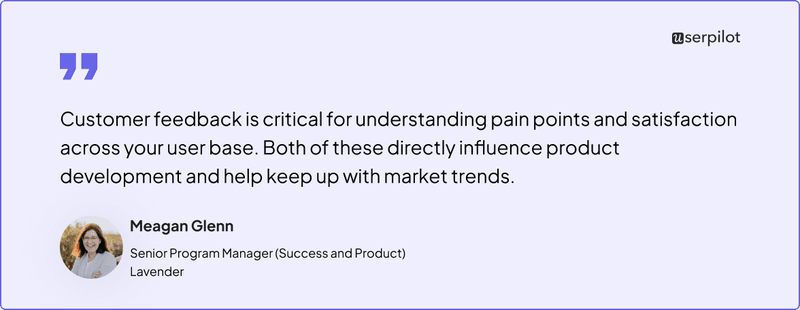
Let’s look at the above quote in detail. Customer feedback helps your SaaS product in three main ways:
- Identifying points of customer frustration and satisfaction: Feedback uncovers both pain points and moments of delight in the user journey. Addressing those frustrations and acting on them can help you eliminate blockers that cause negative experiences.
- Guides product development: Insights from your customers help shape your product roadmap. This means you can prioritize features and improvements that truly resonate with the customers.
- Keeps your product relevant to market trends: Staying competitive means staying relevant. Evolving customer preferences and market shifts require constant adaptation. In this case, regular feedback collection is your compass.
It’s safe to say that collecting and acting on customer feedback is not an afterthought but should be one of the top priorities of product managers.
Two major types of customer feedback
Customer feedback is primarily divided into two major groups: explicit feedback and implicit feedback
1. Explicit feedback
This is the type of feedback customers provide intentionally. It can be collected either actively, through direct requests like in-app surveys, or passively, via feedback widgets.
Here are some examples of explicit feedback:
- Suggestions for new features or areas for improvement.
- Reviews of customer support agents.
- Comments on product features, usability, and performance
Explicit feedback is most relevant when you’re looking to address specific questions or challenges. With explicit feedback, you can directly ask customers for their thoughts, ensuring their voice drives your decisions.
2. Implicit feedback
Implicit feedback is indirect and often derived from customer behavior. It’s not something customers provide intentionally but rather a reflection of their actions, habits, or patterns.
Here are some examples of implicit feedback:
- Time spent on product pages
- Rage clicks
- A/B tests
Implicit feedback is most relevant when users may be unwilling or unable to provide explicit feedback or when explicit feedback is too costly or time-consuming to gather.
Rather than relying on one or the other feedback-collecting tactic, combining implicit feedback with explicit feedback data will give your team a complete picture of how your product or service performs.
8 methods of collecting customer feedback
To bridge the gap between customer expectations and reality, you need to ask targeted questions and analyze responses effectively.
If you’re not sure how to extract actionable insights from customers, here are eight proven methods to collect customer feedback.
1. Customer feedback surveys
Customer feedback surveys allow you to focus on specific areas of interest, whether it’s a new feature launch, overall customer satisfaction, or understanding potential roadblocks.
By deploying surveys strategically, you gain both qualitative and quantitative insights to shape your product and service decisions.
Types of customer feedback surveys to get actionable insight:
- Customer Satisfaction Score (CSAT) surveys: These surveys are great for analyzing satisfaction levels at different stages of the customer journey. They typically include a straightforward question with a Likert scale to measure satisfaction.
- Net Promoter Score (NPS) surveys: These surveys measure customer loyalty by asking, “How likely are you to recommend us to a friend or colleague?” It serves as a clear benchmark, making it much easier to understand how your company is truly perceived by its customers.
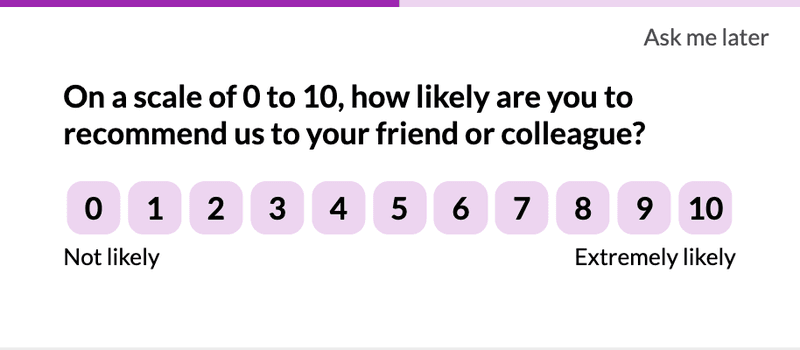
- Customer Effort Score (CES) surveys: With CES surveys, you can assess how easy it is for customers to complete a certain task.
- Product-Market Fit (PMF) surveys: They evaluate how well your product meets customer needs and stands out in the market. They help you find out product alignment with customer preferences and its position against your competitors.
2. Customer interviews
Customer interviews are a powerful way to uncover customer sentiment, usage patterns, and feedback on specific features. Nothing beats face-to-face human interaction to get a clearer understanding of how your business can align better with customer needs.
By engaging customers in one-on-one or group conversations, you get firsthand insights into what they value, the challenges they face, and how your product fits into their lives.
To conduct effective user interviews, follow these tips:
- Segment customers: Start by grouping customers by location, industry, role, or other relevant factors. This ensures you’re gathering insights from distinct personas with unique needs.
- Ask open-ended questions: Avoid simple yes-or-no prompts and instead frame questions that encourage detailed responses to get actionable insights. For example: “What does this feature help you accomplish?
- Spot patterns in responses: After conducting interviews, group similar themes or trends to identify common patterns. These patterns can guide your next steps, starting from refining your product to addressing specific pain points.
3. Feedback widgets
Feedback widgets are tools that pop up in a product’s menu bar or resource center. They are helpful in letting customers express their opinions on the go, without interrupting their experience.
These widgets collect real-time feedback at pivotal moments, so you can understand customer sentiment as it happens.
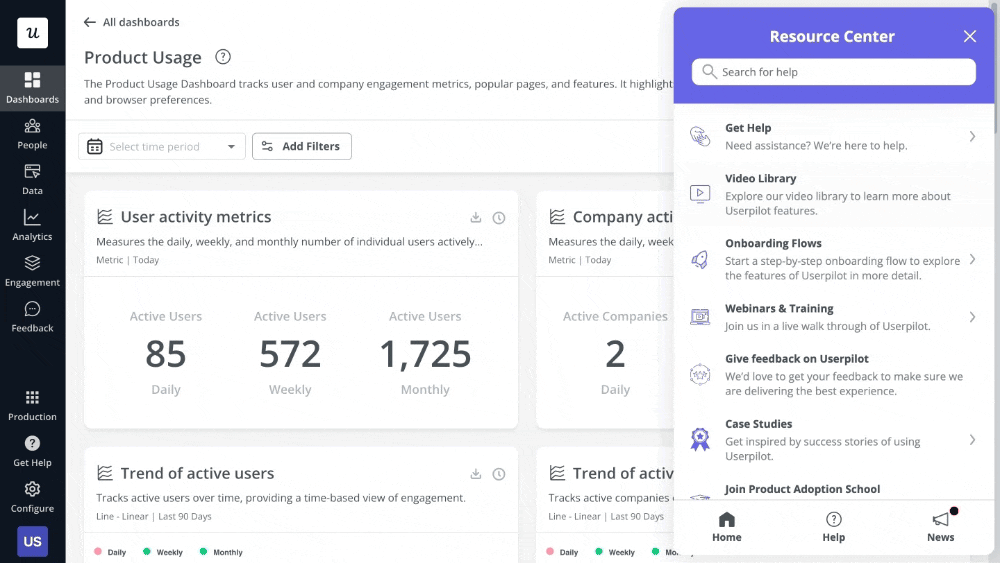
While feedback widgets are valuable, they aren’t without limitations. Customers might overlook them, misuse them, or feel that they don’t capture the full scope of their experience. In such cases, follow these three tips to overcome the challenges:
- Strategic placement: Position widgets and forms where they’re most likely to catch attention.
- Clear instructions: Provide simple, direct prompts to guide customers on how to use the widget effectively.
- Supplement with other feedback channels: Feedback widgets work best when combined with surveys, interviews, and social listening tools. Together, they give you a more holistic view of your customers’ experiences.
4. Social listening
Social listening goes beyond simply monitoring mentions; it helps you notice emerging trends, recurring customer pain points, and opportunities for customer engagement.
This type of feedback turns social media monitoring into a powerful method for shaping customer experience and products.
Opt for tools that offer sentiment analysis, keyword tracking, and even competitive benchmarking to ensure you make the most of social listening.

5. Review sites
Review sites are a goldmine of unfiltered customer insights, which offer a candid view into how your product or service is perceived by real users.
Platforms like G2, Capterra, Trustpilot, and TrustRadius host detailed feedback that reflects customer satisfaction, frustrations, and evolving needs. By analyzing customer feedback through these reviews, you gain valuable input for improving your offerings and staying competitive in the marketplace.
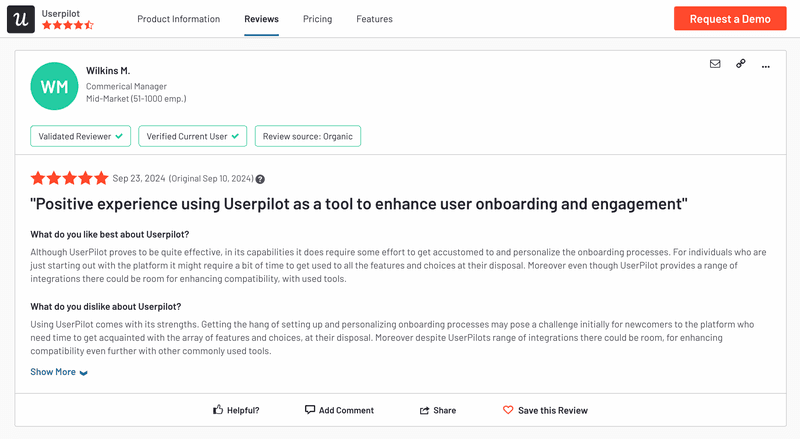
What sets review sites apart is the honest and detailed feedback they capture. Customers are more likely to voice their genuine and unbiased opinions on these platforms.
6. Customer support interactions
Customer service team interactions are more than just a way to resolve issues. Every support interaction is an opportunity to learn and deliver a more proactive, impactful, and personalized customer experience.
Whether it’s through call center conversations, email messages, or chat logs, every interaction holds a wealth of information about customer needs and pain points.
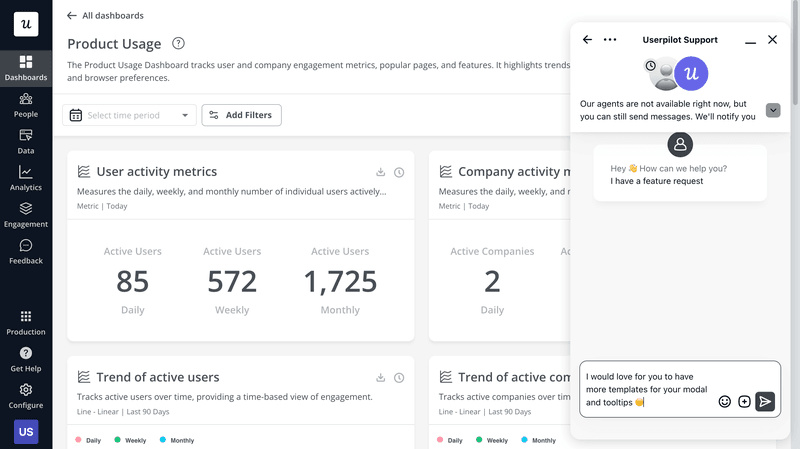
The key to making this channel work is building a feedback system in your company. Since there are multiple ways customers can contact support, the support agents must be proactive in sharing customer responses with relevant stakeholders.
7. Feedback kiosks
When you think of feedback kiosks, SaaS might not be the first thing that comes to mind. Feedback kiosks are typically associated with physical spaces like retail stores, and restaurants, where you can gather customer insights.

However, if you are participating in tech events like SaaStock, you can welcome feedback from existing customers (or potential ones). Since this relies on human interaction, such feedback is expected to be more transparent and thoughtful.
How to create an effective customer feedback strategy?
Simply collecting feedback won’t take you too far. Customers expect their voices to be heard, their concerns addressed, and their suggestions acted upon.
A well-defined strategy helps you build a winning customer feedback framework that keeps your customers engaged and your business ahead of the curve. Here we have seven effective steps to create a customer feedback strategy.
Step 1: Define goals before you collect customer feedback
Every successful feedback strategy hinges on clear, actionable goals.
Without a defined purpose, feedback collection can become scattered and ineffective. Well-defined goals guide the development of a customer feedback loop—a continuous process of collecting, analyzing, and acting on insights.
How to define goals for feedback collection:
- Identify your priorities: Find out what areas your product needs improvement. Is it onboarding, increasing feature adoption, understanding challenges, or boosting customer satisfaction?
- Use a framework: Apply goal-setting methodologies like SMART (Specific, Measurable, Achievable, Relevant, and Time-bound) to clarify what you’re aiming for.
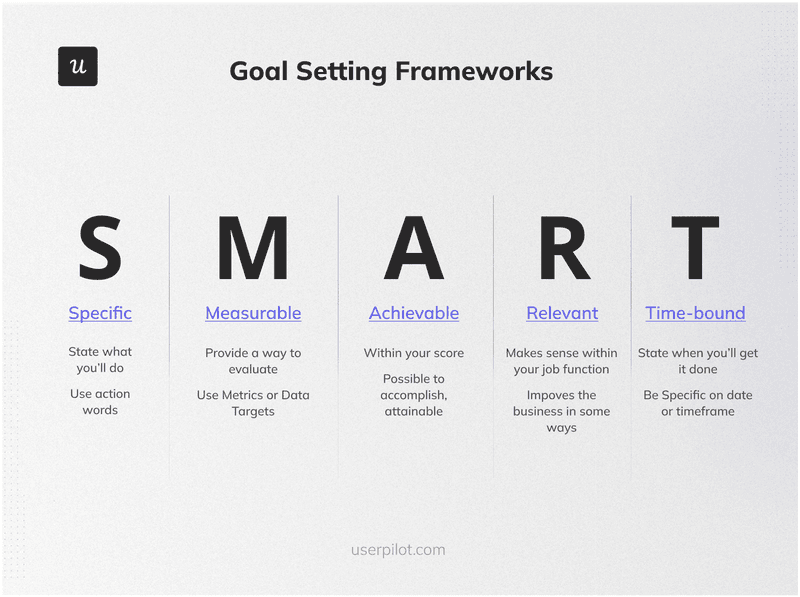
- Segment your audience: Build ideal customer profiles (ICPs) and user personas based on demographics, behaviors, and pain points to align feedback with specific customer needs.
- Integrate tools for seamless collection: Simplify data collection with tools that integrate feedback into the product lifecycle.
Step 2: Segment customers to get actionable feedback
Not all feedback is created equal. Focus on gathering quality responses over quantity to make the most of customer input. Segmentation ensures you’re collecting relevant, actionable feedback that is tied to the right audience.
Group customers based on characteristics like demographics, purchasing behaviors, or satisfaction levels. For instance, asking new users about their onboarding experience yields more meaningful feedback than sending the same survey to recurring customers.
When you segment well, you minimize friction, avoid irrelevant questions, and motivate users to provide thoughtful answers.
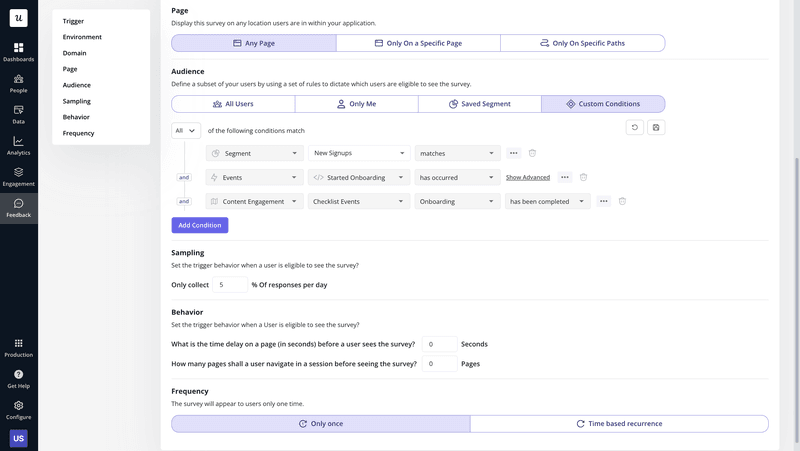
Step 3: Choose the right feedback channels
Your feedback channels should align with your customer’s preferences and touchpoints throughout their journey. Map channels to specific stages, like onboarding, upgrading, or unsubscribing. This ensures you get a holistic view of the customer experience.
Most of the effective feedback channels companies use include in-app feedback widgets, surveys, and A/B testing.
Step 4: Develop and implement the feedback channel
You can’t expect to get quality responses if your interviews are chaotic or surveys are clunky. There are a few questions to keep in mind before you implement your chosen channel.
- How many customers to collect feedback from? – Your sample size shouldn’t be small enough that it’s not a true representative of your audience and similarly, shouldn’t be large enough that it’s costly to execute.
- On which day to collect the feedback? – Be wary of gathering feedback near weekends and the holiday season as so to avoid a poor response rate.
- How many times will you collect the same feedback? – This largely depends on the type of feedback you’re collecting. Welcome surveys should be triggered once, but customer satisfaction surveys should be triggered once every 3 months.
Step 5: Organize, analyze, and prioritize the responses
Collecting customer feedback is an exhaustive process – you need to create a system for storing and organizing feedback data or else your entire purpose for collecting feedback will go in vain.
Meagen Glenn from Lavender shows how feedback is stored and organized in the company:
Creating a culture that promotes feedback sharing starts by encouraging sharing in places that your team is at – for us that is Notion and Slack. We send that to Productboard and share it in a weekly team huddle, then analyze it, and track it at roadmap planning.
– Meagan Glenn, Senior Program Manager at Lavender
Organizing is one part, and analyzing it is another. Use feedback analytics tools to help you look for recurring themes in customer feedback. In Userpilot, you can tag feedback responses and group them into similar categories.
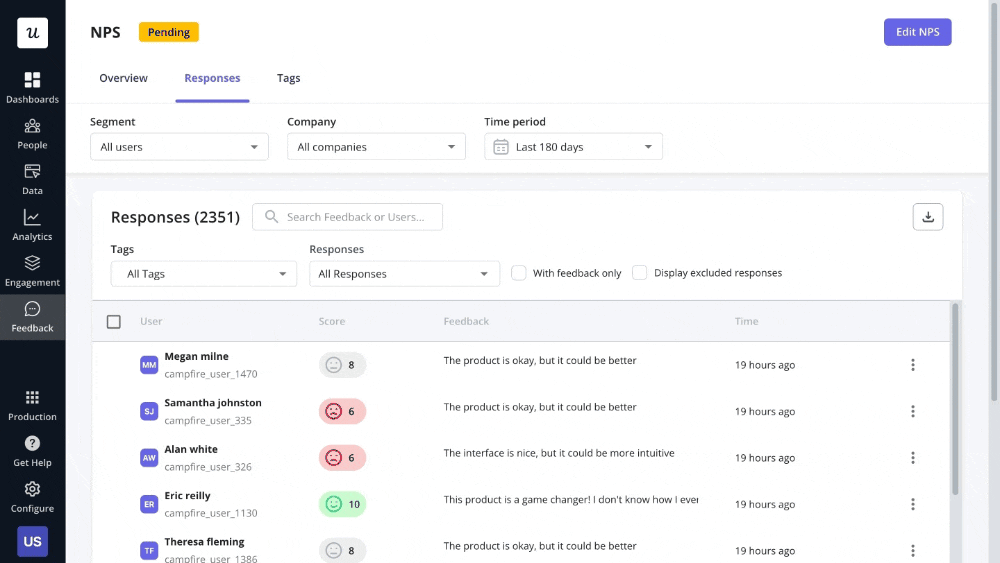
Finally, prioritize which feedback gets implemented first. Usually, I recommend giving importance to feedback that is aligned with business goals and impacts key functionality.
Step 6: Close the customer feedback loop
Closing the customer feedback loop is one of the most critical yet often overlooked steps in a feedback strategy. It’s not enough to act on customer feedback—you need to communicate those actions back to your customers to show that their input has real value.
When addressing negative feedback, invite the customer for a deeper conversation, such as a one-on-one call, to understand their concerns more thoroughly.
If you implement a customer-suggested improvement, announce it through in-app messages, newsletters, or social media updates, emphasizing how their feedback inspired the change.
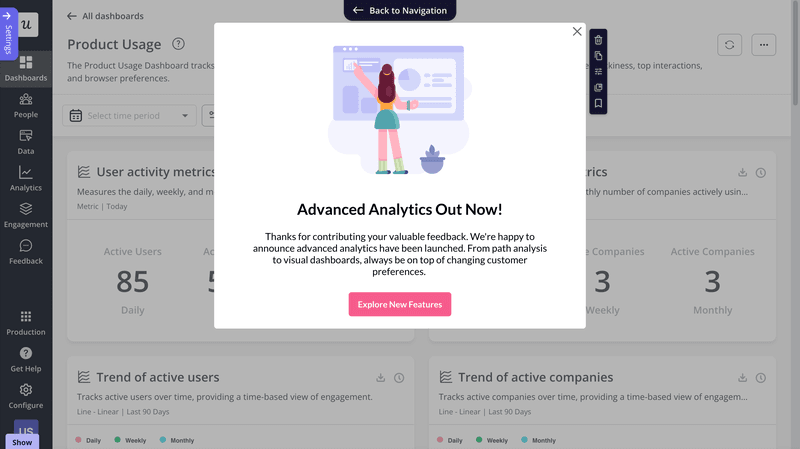
Sometimes, feedback may not align with your current priorities or goals. In these cases, acknowledge the input and explain that it has been added to a backlog for future consideration.
Transparency in handling customer feedback builds trust, even if the suggestions aren’t immediately actionable.
Step 7: Monitor and refine your strategy regularly
Monitor survey metrics such as response rates and completion times to identify areas for improvement. Evaluate customer satisfaction scores (CSAT), customer effort scores (CES), and NPS scores over time to measure the impact of your changes.
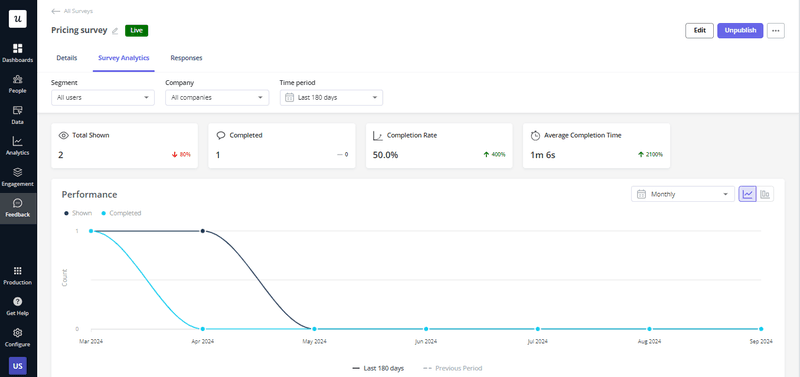
By continuously analyzing feedback performance and iterating on your approach, you ensure that your strategy remains aligned with both customer needs and business objectives.
Best practices to make the most of customer feedback
Although customer feedback is the top source of inspiration for product roadmaps, product managers often struggle to prioritize direct customer responses and requests due to other responsibilities like managing product development and coordinating communications.
Knowing how to optimize the process and interpret insights is what drives real value. Here are some best practices every product manager or customer success manager should follow:
Localize your surveys to increase response rates
If your customer base spans multiple regions and languages, meeting your audience on their terms is essential. Translate surveys into your customers’ native languages. It not only increases accessibility but also boosts response rates and enriches the feedback you receive.
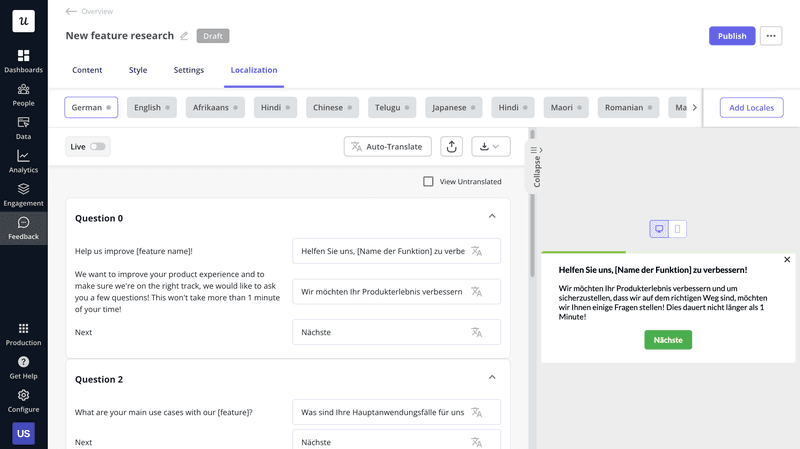
In Userpilot, you can automatically translate your surveys into more than 100 languages in a matter of seconds.
To enable automatic survey translation, navigate to the Localization tab, turn on the localization feature, and then add a new locale. Just click on the Auto-Translate button and you’re done.
Supplement close-ended questions with open-ended ones
To uncover the story behind the numbers, you need to pair close-ended questions with open-ended ones for richer, qualitative insights.
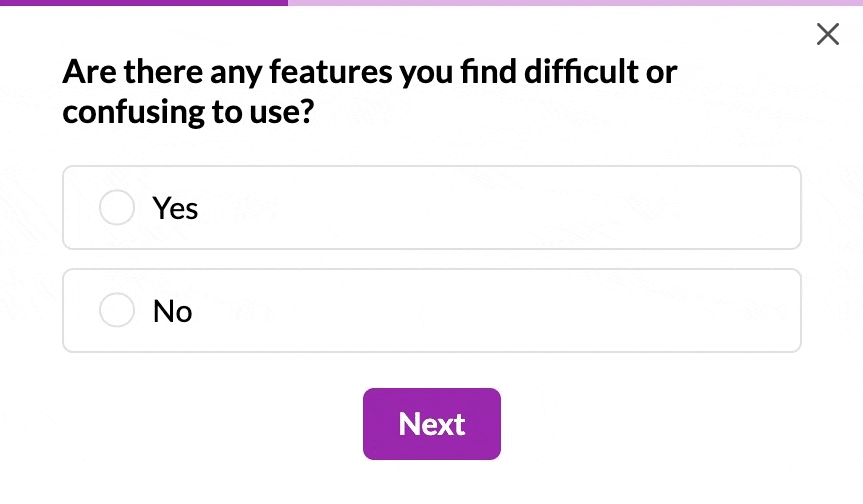
Tips for balancing question types:
- Keep it optional: Open-ended questions can lower response rates if they feel obligatory. Offer them as an option to encourage participation without pressuring your respondents.
- Use skip logic for personalized follow-ups: Ask satisfied customers what they love most and dissatisfied ones how you can improve.
- Make it short and simple: Use simple, concise questions like “What could we do better?” to invite honest, actionable feedback.
This combination ensures you gather both the “what” and the “why,” enabling a deeper understanding of your customers’ experiences.
Don’t overdo feedback requests
Overwhelming customers with too many surveys are more likely to make them ignore requests. Follow these best practices to avoid feedback fatigue:
- Be selective about when you ask for feedback. Consider touchpoints like post-purchase or after resolving a support ticket.
- Ensure customers aren’t receiving back-to-back feedback requests, especially if they interact with your brand across multiple channels.
- Long surveys and excessive questions during sign-up create unnecessary barriers. Simplify the process by collecting only the most critical data upfront.
Striking the right balance keeps your feedback efforts meaningful and ensures customers remain engaged.
Incentivize customers to share feedback
While incentives aren’t always necessary, they can be highly effective for user research, beta testing, or in-depth usability studies. Offering a small reward acknowledges the time and effort customers spend sharing their thoughts.
Examples of effective incentives to consider:
- Gift cards (e.g., a $50 Amazon voucher for usability testers).
- Discounts or promo codes for future purchases.
- Entry into a giveaway or sweepstakes.
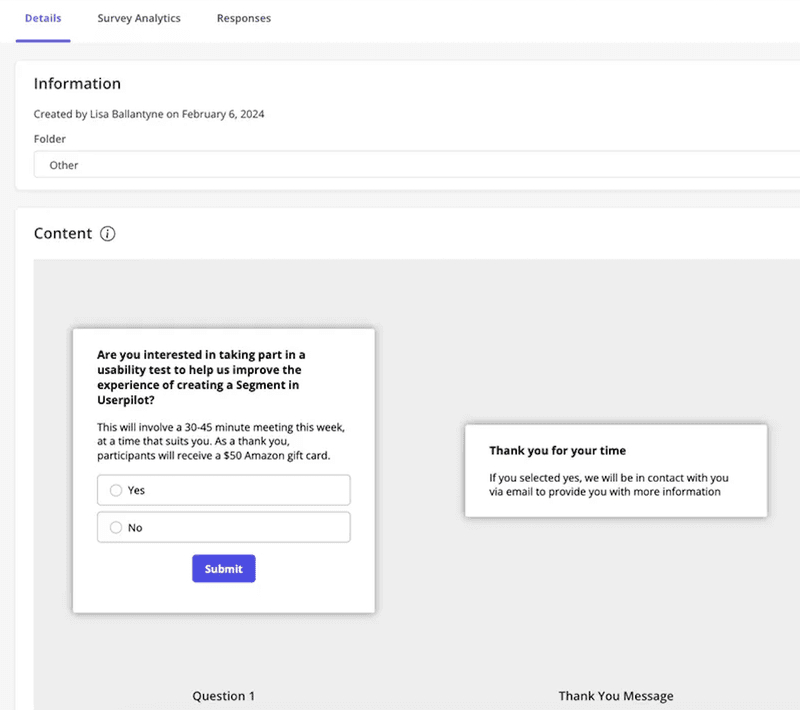
Real-world examples of companies succeeding with user feedback
Let’s look at how four companies use customer feedback insights to improve their product and customer experiences.
Unolo
Unolo is a great example of using NPS surveys to improve customer retention and engagement. By integrating NPS into their feedback loop, they reduced churn by up to 1%, a significant drop from their usual 3% monthly churn rate.
The ease of creating surveys using Userpilot, paired with responsive customer support and educational resources, helped Unolo optimize its feedback collection process and act quickly on insights.
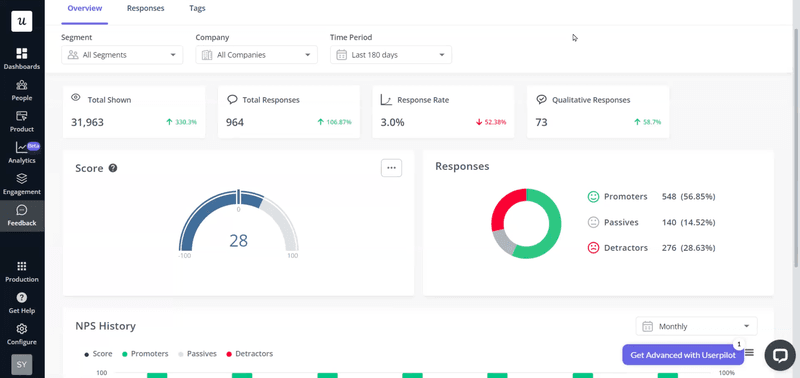
Dealfront
Dealfront uses Userpilot’s feedback widget and surveys to enhance data accuracy. They embedded a “Report data issue” button on their dashboard, which triggered a two-question in-app survey (check the below carousel) to identify and detail inaccuracies.
Over 180 days, 163 users interacted with the survey, and 70 submitted actionable responses, enabling the product and data teams to verify and correct errors efficiently.
By using Userpilot, Dealfront avoided building a custom solution, saving valuable engineering resources while improving the reliability of its data.
Beable
Beable used Userpilot’s all-in-one product analytics and feedback features to enhance product performance and user engagement.
With feature tagging, the team could track user interactions without coding, gaining insights like a 16-fold increase in website visitors to their Educator Academy page of the service websites after transitioning from an external platform.
Funnel analysis allowed Beable to monitor student engagement step-by-step, while surveys provided actionable feedback, achieving a 76.59% response rate on a contest prize survey.
Additionally, Userpilot’s resource center analytics helped Beable tailor self-service content for teachers, administrators, and students, ensuring users received the right support.

Lavender
When creating Lavender 3.0, the company gathered actionable customer feedback to build a better product.
They conducted user interviews and integrated multiple survey types, including churn surveys and PMF surveys, to validate product-market fit.
This feedback loop enabled Lavender to identify and prioritize usability and functionality improvements, especially those affecting a broad user base.
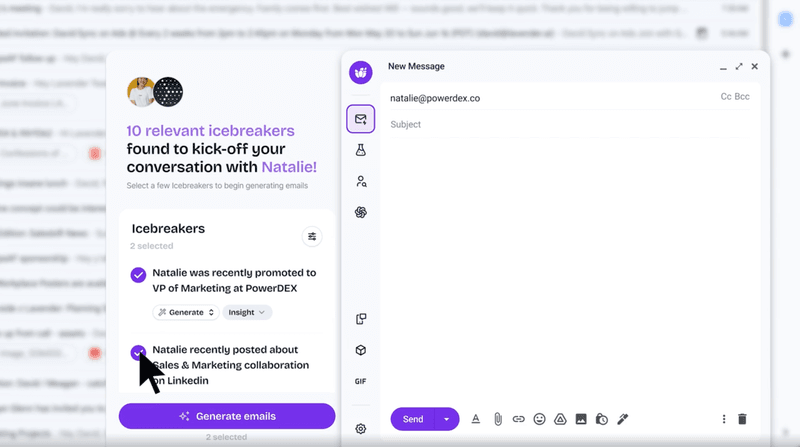
How to leverage Userpilot for customer feedback
There are many ways Userpilot helps companies collect valuable customer feedback efficiently and at scale.
You can start with customizable survey templates—a library of pre-designed templates that can be tailored to fit your brand using the WYSIWYG editor. This enables you to launch surveys quickly without any coding.
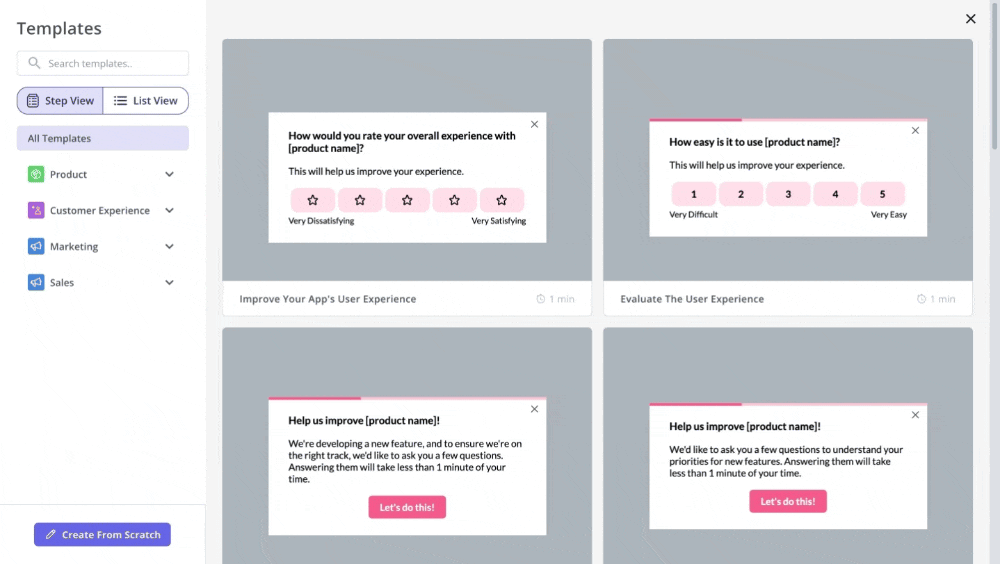
You can trigger surveys contextually with Userpilot, aka after a person has viewed a page or engaged in a certain behavior. You can also choose which segments will be shown in the surveys.
The automation feature helps to collect feedback on a cadence set by you – this way you don’t forget to gather feedback.
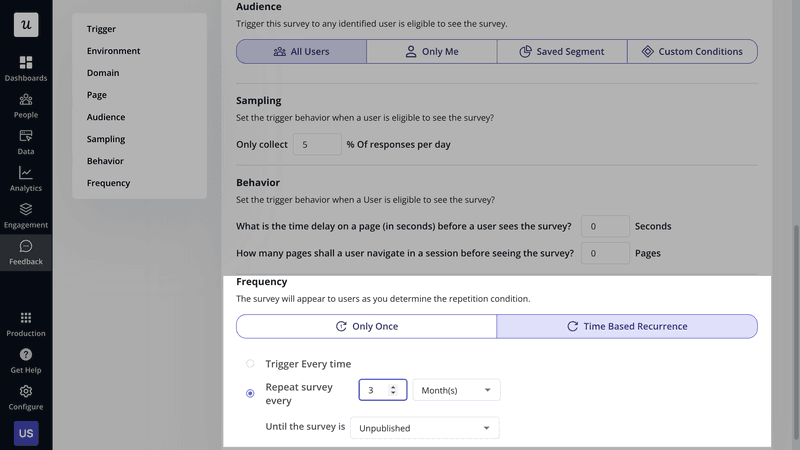
Userpilot also simplifies customer feedback analysis with analytics dashboards. Visualize responses, sort them by segment, company, or time period, and uncover trends to guide your next steps.
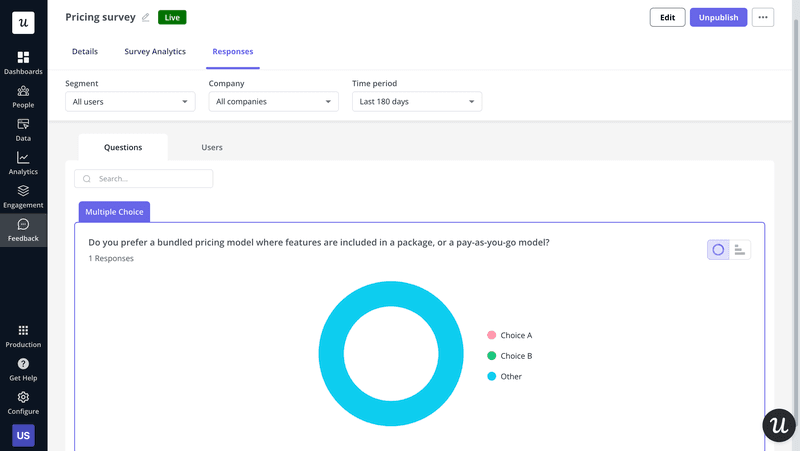
Finally, Userpilot hosts a number of analytics features to collect implicit feedback. For example, use path analysis to identify drop-offs in the customer journey and then use session recordings to monitor user actions in detail.
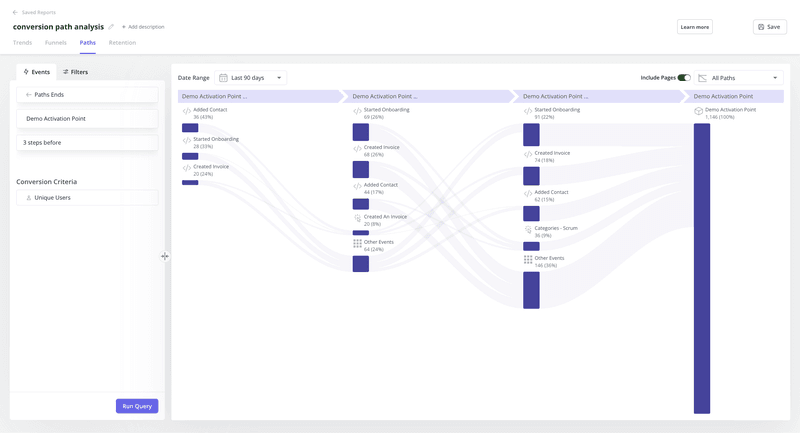
Conclusion
Collecting customer feedback and acting on its insights is a vital job for any product or customer success manager. Although it might appear straightforward, this process can be complex and requires an effective feedback tool.
One such tool is Userpilot. Get a Userpilot demo today to see how it can help your company succeed with quality customer insights.


